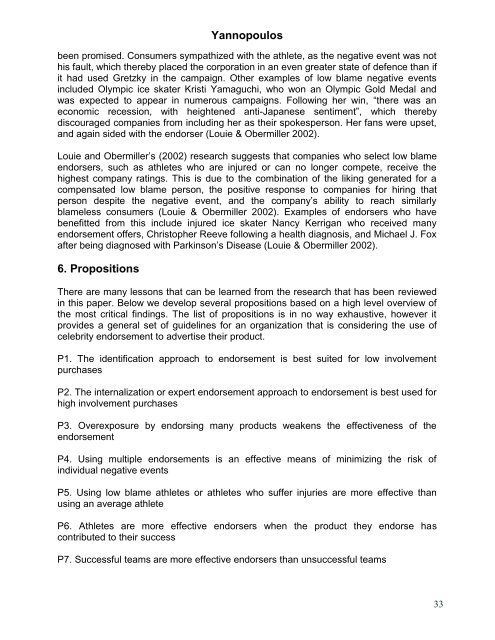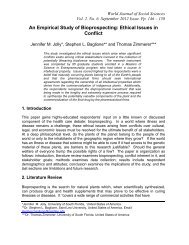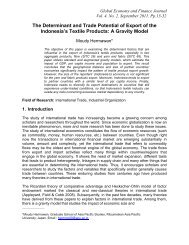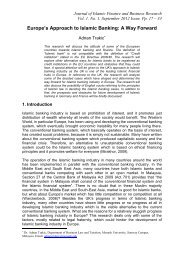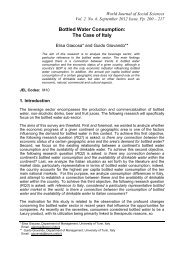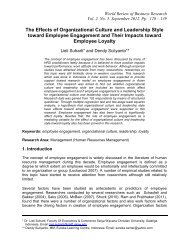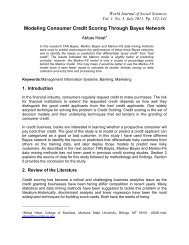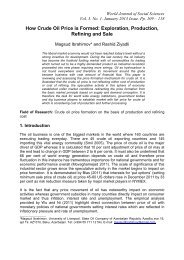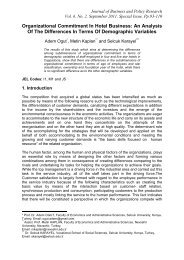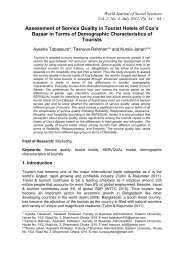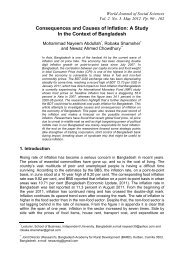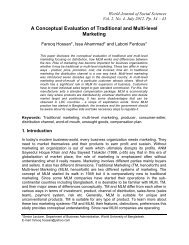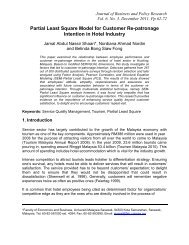Celebrity Advertising: Literature Review and Propositions - Wbiaus.org
Celebrity Advertising: Literature Review and Propositions - Wbiaus.org
Celebrity Advertising: Literature Review and Propositions - Wbiaus.org
Create successful ePaper yourself
Turn your PDF publications into a flip-book with our unique Google optimized e-Paper software.
Yannopoulos<br />
been promised. Consumers sympathized with the athlete, as the negative event was not<br />
his fault, which thereby placed the corporation in an even greater state of defence than if<br />
it had used Gretzky in the campaign. Other examples of low blame negative events<br />
included Olympic ice skater Kristi Yamaguchi, who won an Olympic Gold Medal <strong>and</strong><br />
was expected to appear in numerous campaigns. Following her win, “there was an<br />
economic recession, with heightened anti-Japanese sentiment”, which thereby<br />
discouraged companies from including her as their spokesperson. Her fans were upset,<br />
<strong>and</strong> again sided with the endorser (Louie & Obermiller 2002).<br />
Louie <strong>and</strong> Obermiller’s (2002) research suggests that companies who select low blame<br />
endorsers, such as athletes who are injured or can no longer compete, receive the<br />
highest company ratings. This is due to the combination of the liking generated for a<br />
compensated low blame person, the positive response to companies for hiring that<br />
person despite the negative event, <strong>and</strong> the company’s ability to reach similarly<br />
blameless consumers (Louie & Obermiller 2002). Examples of endorsers who have<br />
benefitted from this include injured ice skater Nancy Kerrigan who received many<br />
endorsement offers, Christopher Reeve following a health diagnosis, <strong>and</strong> Michael J. Fox<br />
after being diagnosed with Parkinson’s Disease (Louie & Obermiller 2002).<br />
6. <strong>Propositions</strong><br />
There are many lessons that can be learned from the research that has been reviewed<br />
in this paper. Below we develop several propositions based on a high level overview of<br />
the most critical findings. The list of propositions is in no way exhaustive, however it<br />
provides a general set of guidelines for an <strong>org</strong>anization that is considering the use of<br />
celebrity endorsement to advertise their product.<br />
P1. The identification approach to endorsement is best suited for low involvement<br />
purchases<br />
P2. The internalization or expert endorsement approach to endorsement is best used for<br />
high involvement purchases<br />
P3. Overexposure by endorsing many products weakens the effectiveness of the<br />
endorsement<br />
P4. Using multiple endorsements is an effective means of minimizing the risk of<br />
individual negative events<br />
P5. Using low blame athletes or athletes who suffer injuries are more effective than<br />
using an average athlete<br />
P6. Athletes are more effective endorsers when the product they endorse has<br />
contributed to their success<br />
P7. Successful teams are more effective endorsers than unsuccessful teams<br />
33


